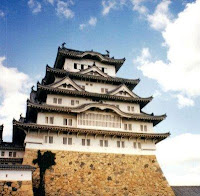The Church of Zion, always faithful to call as ever..
 "When this church was built?" asked a visitor to the tour guide of the old city of Batavia (the old names of Jakarta) during the day.
"When this church was built?" asked a visitor to the tour guide of the old city of Batavia (the old names of Jakarta) during the day. Who would have thought in the past times in the region called Batavia, the old city of Jakarta, there is an ancient church but still continued to serve until in modern times. Local residents who live near the church called it the Portuguese Church (Portugeesche Buitenkerk).
This church is includes the buildings that protected and become one of the historic buildings are often scheduled to be a tourist event.
 Is it true that the Portuguese became one of the residents of the city of Batavia in the past? Long before the Dutch took over the government in the city, Portuguese traders had often come to the city of Batavia, they often perform commercial transactions with the local population.
Is it true that the Portuguese became one of the residents of the city of Batavia in the past? Long before the Dutch took over the government in the city, Portuguese traders had often come to the city of Batavia, they often perform commercial transactions with the local population. Some of them settled there and assimilated with the indigenous/local in marriage.
 The Church of Zion (the local cal it ‘Gereja Sion’ ) or the Portuguese Church is located at the corner of the Street of Pangeran Jayakarta and the area of Mangga Dua, Jakarta, not far from the City Train Station. It took two years since the groundbreaking ceremony by Pieter van Hoorn on October 19, 1693 and officially used as a church led by Reverend Theodore Zas on Sunday, October 23, 1695. Until now this church continues to function with the faithful of the church council came from various places.
The Church of Zion (the local cal it ‘Gereja Sion’ ) or the Portuguese Church is located at the corner of the Street of Pangeran Jayakarta and the area of Mangga Dua, Jakarta, not far from the City Train Station. It took two years since the groundbreaking ceremony by Pieter van Hoorn on October 19, 1693 and officially used as a church led by Reverend Theodore Zas on Sunday, October 23, 1695. Until now this church continues to function with the faithful of the church council came from various places.  The simple shape of the building from the outside, but the interior has the Baroque style original furnishings comes from the times when built. Baroque-style furnishings furniture can be seen in the pulpit, chairs, ornamental stairs, chairs and some wall hangings and ornaments on the pole and the wall.
The simple shape of the building from the outside, but the interior has the Baroque style original furnishings comes from the times when built. Baroque-style furnishings furniture can be seen in the pulpit, chairs, ornamental stairs, chairs and some wall hangings and ornaments on the pole and the wall. Land for this church building is the donation of land from local residents at the time, it's
 not far from the cemetery. Until recently most of the cemetery is maintained to be part of the churchyard. Gravestones cemetery of Governor General of Batavia, died in 1728, Governor General Zwaardecroon. There are approximately 2000 graves in the area of this church, but with the passage of time some of the tomb had been lost to highways and shopping buildings around the church, there is even a tomb that had been moved to the old town museum not far from this church.
not far from the cemetery. Until recently most of the cemetery is maintained to be part of the churchyard. Gravestones cemetery of Governor General of Batavia, died in 1728, Governor General Zwaardecroon. There are approximately 2000 graves in the area of this church, but with the passage of time some of the tomb had been lost to highways and shopping buildings around the church, there is even a tomb that had been moved to the old town museum not far from this church.Times keep changing but the love and the desire to do well never stop, church councils remained faithful through times of worship there.
-------------------------------------------------- ------------
(As told by aunt Prima Widi Hatmi Prima / Images Prima Widi Hatmi)


Comments
Post a Comment